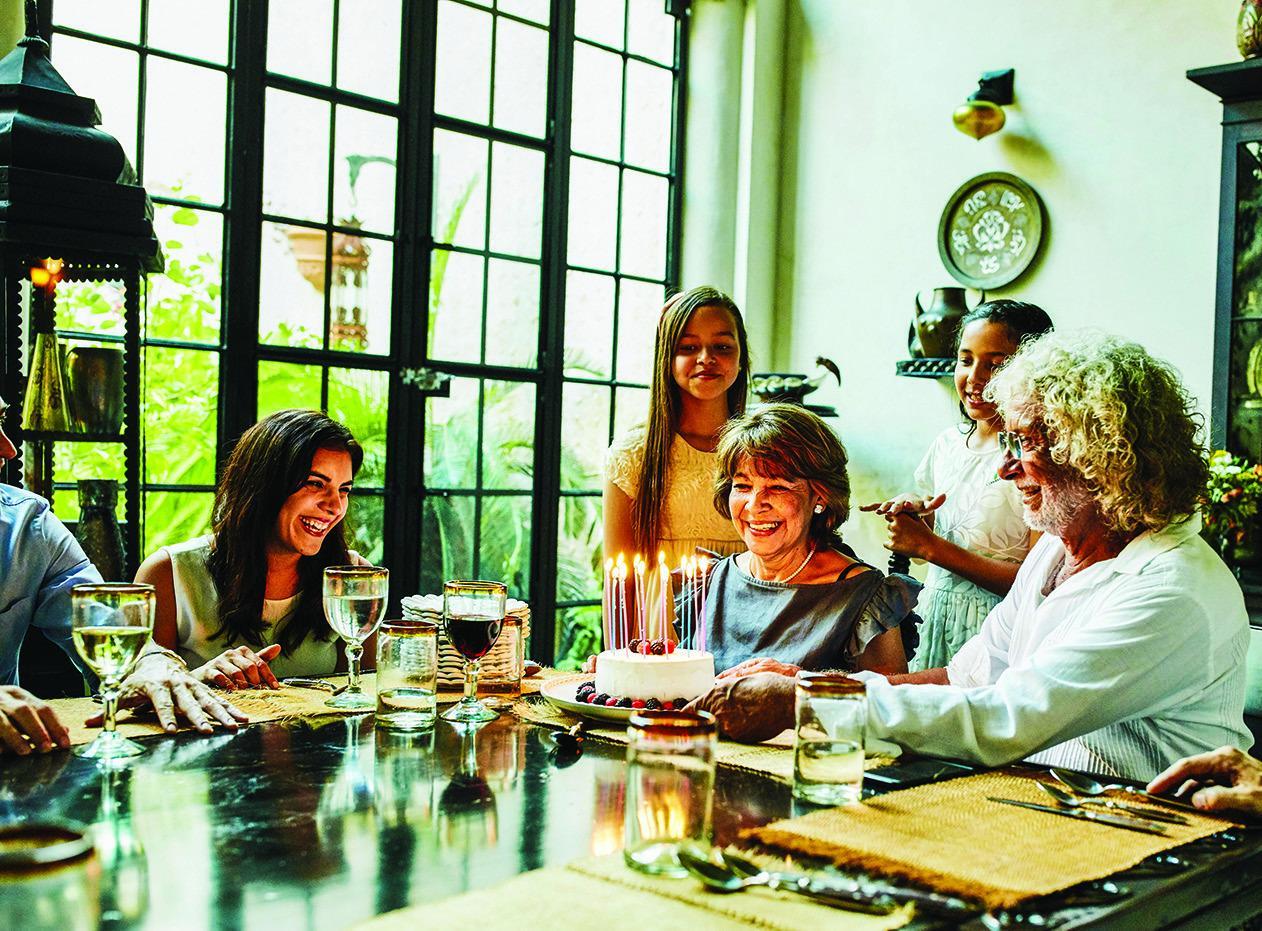
Countries around the world have their own individual takes on birthday celebrations.
Photo from Metro Creative

SAN MARCOS PUBLIC LIBRARY
625 E. HOPKINS ST.
512-393-8200
Answers to Go
Q.My birthday is coming up! What is the history of the birthday and how do people around the world celebrate them?
A. Birthdays, of course, did not begin until ancient people began to take note of nature’s cycles — the moon, sun, stars, growth of plants, etc. This is what prompted humans to create calendar systems — the need to track the cycles of life and be able to identify when someone has lived for one cycle. Pagan religions were the first to notice and track these changes. In Western culture, Christians initially did not celebrate birthdays because they associated them with paganism and “original sin.” Pagans thought that evil spirits lurked on days of major changes, like the day you turn a year older. They often lit candles to scare off evil spirits — enter the birthday candle. The ancient Greeks believed that each person had a spirit that attended his or her birth and kept watch. That spirit “had a mystic relation with the God on whose birthday the individual was born,” says the book “The Lore of Birthdays.” (DeRusha) It wasn’t until the 4th century that Christians began to celebrate birthdays because they began celebrating the birth of Jesus. In the 18th century, in Germany, Kinderfest was celebrated, and included a cake, candles and blowing them out to make a wish. This started birthdays for children. The industrial revolution made birthday celebrations more accessible as the required ingredients for a cake — sugar, flour, eggs, etc. because they were more readily available.
What about traditions around the world?
Two sisters, Patty Hill and Mildred J. Hill, who happened to both be Kentucky school teachers wrote a song called “Good Morning to All” in 1893. Their estate still owns the right to the song. (Admin.)
Argentina: Birthdays in Argentina are celebrated with tea sandwiches and sweet pastries called sandwiches de miga and masas. Children also get a tug on their earlobe for every year they are old.
Brazil: The birthday boy or girl is given the first piece of cake, but they do not keep it for themselves. They give it to the most important person in their lives. For kids, that’s usually the mom or dad.
Canada: To ward off bad luck, the person celebrating their birthday has their nose greased, usually with butter, by friends and family.
Egypt: In Egypt, family and friends are invited to a party (hafla) that includes singing and dancing. Flowers and fruit are the main party decorations and are “seen as symbols of life and growth.” Egyptians usually have a birthday cake but do not send birthday cards like people do in the United States. (Hansen)
Ghana: Children are woken on their birthdays to eat a fried sweet potato patty called “oto.”
Ireland: Children are hung upside down and their heads gently “bumped” on the floor, one for every year they are old.
Israel: In Israel, the birthday child wears a crown of flowers or leaves and is raised while sitting on a chair the same number of times as their age. Also, on a child’s third birthday, they receive their first haircut.
Jamaica: A messy tradition, Jamaicans will throw flour at you on your birthday in what they call antiquing. It’s usually done when you’re not expecting it.
Japan: In Japan, birthdays aren’t celebrated as often as they are in America. Similar to Chinese traditions, the Japanese traditionally celebrate a person turning a year older on New Year’s Day. Like birthdays in the Western world, small gatherings, a cake and singing might occur. (Meleen) Mexico: A Mexican party is called a fiesta and includes traditional food items, such as tacos and a candy-filled paper mache figure (pinata) that is hit with a stick until it bursts open and candy spills everywhere for the party guests to enjoy.
New Zealand: After the candles are blown out on the birthday cake, the birthday person receives a clap for every year they are old.
Nigeria: A person’s first, tenth and fifteenth birthdays are the most important, and are celebrated with large parties with their families.
The most common birthday in the United States is Oct. 5.
If you would like to learn more about birthdays, traditions and birthday cakes, check out these books:
• “A bloom a day: a fortune-telling birthday book” by Ron van Dongen, • “Colorstrology: what your birthday color says about you” by Michele Bernhardt, Michele.
• “The secret language of birthdays: personology profiles for each day of the year” by Gary Goldschneider.
• “Handmade birthdays: 101 gift, cake & card ideas for ages 1 to 101.”
• “Your hidden symmetry: how your birth date reveals the plan for your life” by Jean Haner,
• “The magick of birthdays: rituals, spells, and recipes for honoring your solar return” by Hannah Hawthorn,
• Admin, & *, N. (2017, February 3). “Pump it up Party. Let’s Throw Something.” Retrieved Feb. 27 from pumpitupparty.com/ blog/how-did-the-tradition- of-birthdays-begin/
• DeRusha, J. (2011, January 25). “Good question: How did birthday traditions start?” CBS News. Retrieved Feb. 27 from cbsnews. com/minnesota/news/ good-question-howdid- birthday-traditionsstart/ • Hansen, A. (2021, October 25). “Birthday traditions around the world.” Giftster. Retrieved Feb. 27, from giftster.com/ news/2020/07/30/birthday- traditions-aroundthe- world/
• Meleen, M. (2022, August 5). “Birthday traditions around the world: Celebrations of a lifetime.” LoveToKnow. Retrieved Feb. 27, from family.lovetoknow.com/ cultural-
Suzanne Sanders is the columnist for the library. She is the Community Services Manager for the San Marcos Public Library and came from the Austin Public Library in 2015 after having served there as a librarian for over 20 years. She gratefully accepts your questions for this column.











